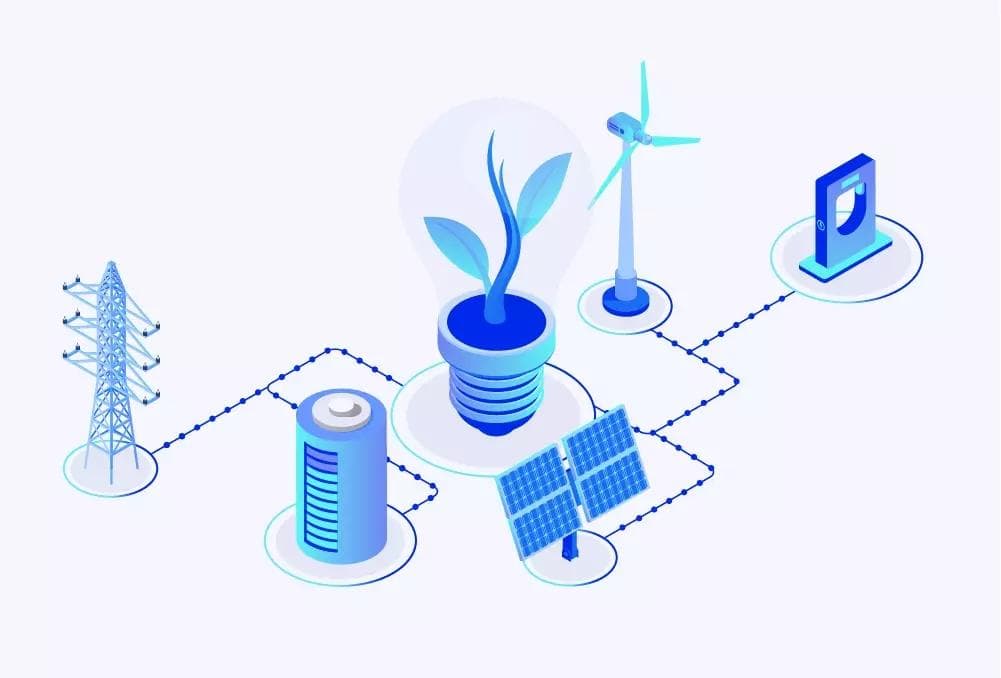As we have stated before, we’re going to elaborate slightly more on the topic of energy. Rooted deeply in said matter, eMobility plays an important role and fits right into the subject of energy management and distribution. Given the ever-circling debates on the potential impact of electric vehicles on global energy resources, the need to extend the narration is even more grounded.
What is energy efficiency?
The practice of energy efficiency is the act or ability to use fewer resources on a task, followed by decreased consumption and waste. In general, energy efficiency is the ratio of the useful output to the total input of any resource. For example, high-efficiency appliances use less electricity than standard appliances, and better insulation in a home reduces the amount of heating and cooling energy required. The study of energy efficiency looks at the ways to reduce the amount of energy required to provide a given service or function and the research is being conducted at nearly every aspect of the usage. It also includes improving the overall efficiency of systems, such as a power grid or transportation system.
Energy efficiency is a vital component in achieving net-zero emissions of carbon dioxide through decarbonization. It can be one of the easiest and most cost-effective ways to combat climate change while also providing consumers with lower prices on their electricity bills, as well as improving competitiveness among businesses.
Why does energy efficiency matter?
The motivation to improve energy efficiency is vast and diverse. The act of decreasing our use of fossil fuels can result in financial savings, while also reducing costs for consumers. The need or desire for economical practices has never been greater than it currently is, with prices at an all-time high. The economic crisis has forced people to re-evaluate the way they use energy in their homes and businesses. According to the 2012 ACEEE Summer Study on Energy Efficiency in Buildings, improving commercial building energy efficiency could save American businesses $40 billion annually by 2030.
It's not just businesses that can benefit from saving money on their energy bills; households can also make a significant dent. The same study found that if households across the United States improved their energy efficiency by 10%, they would collectively save $19 billion annually on their utility bills.
While there are many motivations to pursue energy efficiency, one of the most important is simply that it is better for the environment. Burning fossil fuels emits harmful greenhouse gases into the atmosphere, which is leading to irreversible climate change. Improving energy efficiency is one of the most effective ways to reduce greenhouse gas emissions.
The areas of energy efficiency
In the short term, some energy efficiency improvements may require a higher upfront investment, but offer significant long-term savings. In the long term, energy efficiency improvements can help reduce greenhouse gas emissions and contribute to a healthier environment. Nevertheless, there is a whole plethora of possible abidings in nearly every area that requires energy.
Industrial manufacturing:
Improving the energy efficiency of industrial manufacturing and processes can be challenging, but it can also lead to significant reductions in energy consumption and emissions. In many cases, energy-efficient technologies can be readily adopted in existing facilities with minimal investment.
In other cases, more comprehensive approaches may be required that involve changes to production processes or the adoption of new technologies. Improving the energy efficiency of industrial manufacturing and processes can also require changing equipment, upgrading controls and instrumentation, and modifying operating procedures.
Resource extraction and processing:
Extracting and processing raw materials generally requires a significant amount of energy. Reducing the energy intensity of these operations can have a major impact on overall energy consumption.
There are a number of ways to improve the energy efficiency of resource extraction and processing, including using energy-efficient equipment, optimizing processes, and adopting best practices.
Buildings:
Buildings account for a significant portion of total energy consumption. Improving the energy efficiency of buildings can help to reduce energy consumption and emissions.
There are several ways to improve the energy efficiency of buildings, including improving insulation, upgrading heating and cooling systems, air conditioning, smart thermostats, and using energy-efficient lighting i.e., LED. Many incorporate renewable sources as well, such as solar panels on the roofs.
Appliances and consumer electronics:
Appliances and consumer electronics are also a big part of total energy consumption. Improving the energy efficiency of appliances and consumer electronics can help reduce energy consumption and emissions.
There are a number of ways to improve the energy efficiency of appliances and consumer electronics, including using more efficient models, turning off devices when they are not in use, and properly disposing of old or broken devices.
Transportation:
The transportation sector is one of the most energy-intensive sectors of the economy. Improving the energy efficiency of transportation can help to reduce energy consumption and emissions.
There are a number of ways to improve the energy efficiency of transportation, including optimizing routes and consolidating shipments. In some cases, it may also be possible to substitute energy-intensive transportation modes with less energy-intensive alternatives. Interesting fact may be that with electric vehicles, the efficiency is estimated to be around 90%, meaning that only 10% of the energy is not directly used.
The main benefits of energy efficiency
One of the most important benefits of energy efficiency is that it can help to reduce emissions of greenhouse gases and other pollutants. Greenhouse gas emissions are one of the main drivers of climate change, and they have a variety of negative impacts on human health, agriculture, and natural ecosystems. Reducing emissions of greenhouse gases is thus a key goal of many energy efficiency programs.
In addition to reducing emissions, making buildings more energy efficient can also save money on energy bills. This is because using less energy generally leads to lower energy costs. For example, switching to more efficient lighting can lead to significant savings on electricity bills. In some cases, the savings from energy efficiency measures can be used to offset the costs of implementing those measures.
Finally, improving the energy efficiency of buildings can also improve the competitiveness of businesses. This is because businesses that use less energy often have lower operating costs. In addition, energy efficient buildings often have higher resale values than their less efficient counterparts.
Overall, the benefits of energy efficiency are wide-ranging and significant. By reducing emissions of greenhouse gases and other pollutants, saving money on energy bills, and improving the competitiveness of businesses, energy efficiency provides a key solution to many of the world’s most pressing problems.

